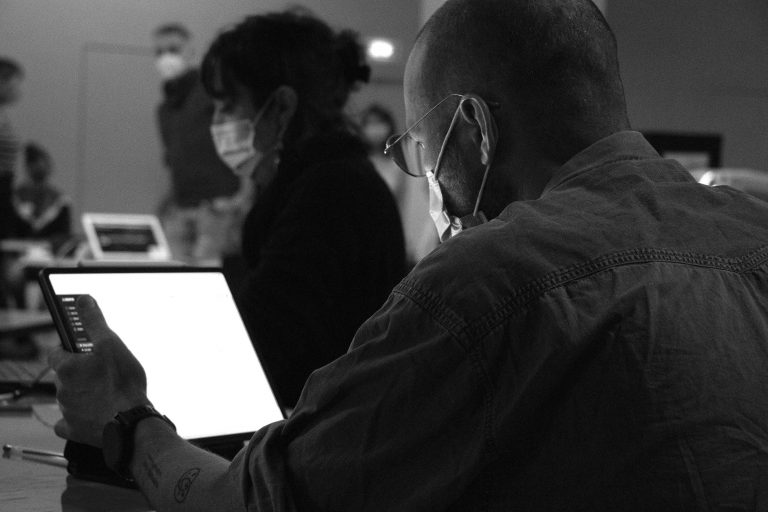
re-thinking the box, from inside
I was invited by Anat Meruk to be part of a Living Lab experience, organized by Master Students of the Parisian University Paris 8 in collaboration with La Gaité Lyrique. She cordinated the project as pedagogic advisor. The event was part of the institutions Research & Create Project focusing on the beautiful idea of “writing together in/on immaterial spaces”, a very touching concept. The morning also represented a great opportunity to meet people from the education, culture and tech world.
The Lab was great, felt young and right. Tutors and students used Miro and other digital-wall tools. They brilliantly mixed them with real life physical interactions, creating a fully inclusive, digital but synchronous and very contemporary learning environment. Everything was profoundly inspired and led by Design Thinking. A classic for the consultants and developers in the room, nonetheless amazingly refreshing. Also, after more than six months of remote meetings and online teaching, being able to draw and brainstorm with post-it‘s and people in the inspiringly empty spaces of the Gaité felt very good.
so outside the box, one can hardly see it
This beautifully organised morning also got me reflecting. The students, admitted at a certain point, that this was their first time they were asked to elaborate a project following the basic 5 stages of design thinking. How can this be? Why only at this stage of their education?
Unfortunately, cooperation still seems too often to be understood as collaboration and remote as distributed. It looked as if the students were taught to think out of the box for so long, that they have become incapable to see the box, let alone re-think that box. I do not blame them, nor do I blame the tutors.

Digital awareness needs to be learned
Being part of a “digitally native” generation or group does not make one understand computation, computational design thinking or how to speak machine (Maeda, 2019). It needs to be taught as early as primary school. My parents, as well as their parents were “mathematically native”. They still had to learn it in school.
Being taught digital awareness or computation by “digital adopters” even if they are very early adopters surely does not always help. Even more so if a student is forced to learn in a system which has played analog against digital for ages, or still does.
I sincerely thank Anat, the tutors and especially the students, for doing a great job and mostly for being dead-sincere. Students must have learned something bigger than they probably know, if they have the guts to openly say: I have never done this before. It is my first time but I’ll do it anyway and will take full responsibility!
“Digitally native” or not, they are fully transparent and that is a sure way to go far in this world of disruption.


Leave a Reply